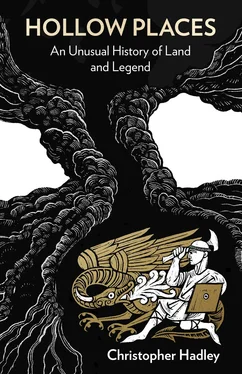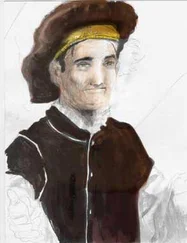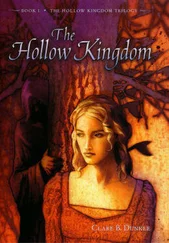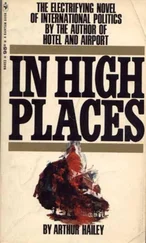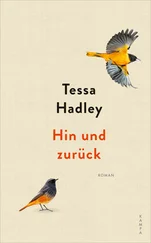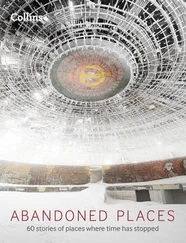The meanings, as you have probably noticed, are not always self-explanatory, although Harps is easy: it should be a triangular-shaped field. Cockerels on the other hand is a false friend. Field names can morph in a process that gradually transforms a strange-sounding word into something familiar that seems to fit – philologists call this ‘popular etymology’. So Cockerels was originally Cocklers – from the weed corn cockle – and nothing to do with male chickens. Similar forces tinker with our folk tales and our urban myths, and in such ways dragons are sometimes born and giants set free to stalk the land. A well-known instance of popular etymology is Gravesend; there is one in Kent and another on the border of the Pelhams, and no doubt elsewhere. A friend told me recently that the local Gravesend was named for the plague victims who were buried there in the seventeenth century; she suspected this because Gravesend in Kent was apparently so-called because the London dead were washed down the Thames and ended up there, where they were buried. It is a good story, but a quick check of the place-name dictionaries tells us that both places were so-called centuries before the plague, before the Black Death even, and probably owed their monikers to local landowners called Graves.
Some field names have simply become mumbles of the original: how does Smallops tell us about the productivity of the land? For Smallops read Small Hopes . The meaning of Duffers has also been submerged in the argot of the agricultural labourer. For Duffers read Dovecote . Other names are made from obsolete words: a pightle is a small field, while a croat or croft is a small piece of land often attached to a house and usually enclosed. Thousand Acres is, of course, usually a very small field. If we ask why Lammas Meadow tells us something about how a field was farmed we can find an answer rich with history between Lamb Pits and Lamp Acre : ‘“Meadow lands used for grazing after 1 August”. The hay harvest occupied the time between 24 June and Lammas, when the fences were removed and the reapers turned their attention to the corn. The cattle were meanwhile allowed to graze on the aftermath. Loaves made from the new wheat were taken to the church at this time for a blessing and a thanksgiving – hence the name hlāfmæsse , “loaf festival”.’
Sometimes the name is the only surface remnant of a field’s claim to fame. There is no brick kiln to be seen in Brick Kiln Mead. Names can also help identify mysterious features still visible in the landscape. Aerial photographs reveal two circular mounds in a large field – ancient burial mounds perhaps? It is more likely they are remnants of a medieval coney, or rabbit, farm because it is remembered as The Warren . Other commonplaces of the medieval past live on only in the name: in the south-east corner of Furneux Pelham is Woolpits , which perhaps means ‘land near a wolf pit’. Although others have argued that rumours of wolves, like those of dragons, might just as easily refer to metaphorical beasts.
Field names remind me of Entish, the language of Tolkien’s giant tree shepherds, in which ‘real names tell you the story of the things they belong to’, but words in Entish were impossibly long agglomerations of meaning, so I suppose field names are in some ways the opposite: they contain much in a very small space, like poetry. Treebeard, the leader of the Ents declares that hill is ‘a hasty word for a thing that has stood here ever since this part of the world was shaped’, but Margaret Gelling counted some forty different words for a hill in Old English; after all, the Saxons needed to know one type of hill from the other when giving directions. The word hill may be lost somewhere in the name of the fields we are hunting for: Pepsells . The name is not in the field-name dictionaries, but some forty miles away, on the Bedfordshire border, there is a Pepsal End Farm with various spellings recorded, including in 1564 ‘Pepsel’. The meaning is ‘Pyppe’s Hill’ from the Anglo-Saxon personal name Pyppa, suggesting a very venerable field name indeed. Did Pyppa till the earth with Payn of Paynards – perhaps the oldest surviving field name in those parts – and with Peola, who gave his name to Pelham in the early days of the Anglo-Saxon migration? It is fun to think so, but it does not help us find the field we are looking for, a field where some once thought a dragon took up residence.
The schoolchildren did a wonderful job of collecting the names for Miss Prior and posterity. Across Hertfordshire as a whole, the operation was a great success. Two luminaries of the English Place-Name Society, Allen Mawer and Sir Frank Stenton, wrote: ‘We have been able in this county, possibly with more success than in any other that we have hitherto attempted, to get a lively picture of the field-names as they still survive and through the help of the schoolmasters and mistresses and their scholars we have again and again been able to obtain information which has been invaluable in throwing light upon the history of these names.’
The procedure was copied all over England and some of the information was used in lists in the early county volumes. The complete lists and maps were safely stored at University College London; safe until disaster struck in September 1940 when bombs fell from the sky. All the records were destroyed and the small number of names not already in print were lost along with their locations.
Fortunately, there are maps of Brent and Furneux Pelham rolled up in the Furneux church chest that are almost certainly the result of Miss Prior’s exertions. They are brittle and yellow: the parish boundary in red; the roads and woodland in green; the river, the field boundaries and their names marked in dark blue ink. The crossings-out, illegible pencil notes and childlike handwriting add to their charm.
Carefully unrolling the maps for the first time, I eagerly skimmed them in search of Pepsells, but could not see the name. I worked systematically from field to field following the names from Furneux Pelham church through Alldick and Little Pasture to the field boundary between Shooting Hills and Brick Kiln Meadow . I kept the pond on my left through Copy and skirted the ruins in Johns Pelham Park , emerging in Long Croat . Into Brent Pelham through St Patricks Hill , Chalky Field and Broadley Shot , my eye passed over 300 distinct field names: poetry like Moat Duffers , Malting Meadow and Mile Post Field , Ashey and Dumplings and Hitch . There were meads and leys, crofts, croats, pightles, springs and shots. Pepsells, great or small, was nowhere. Looking at that map for the first time, I began to entertain an idea that had not even occurred to me until that moment: what if Woolmore Wigram had just made the whole thing up? Maybe there never were a Great and Little Pepsells, no credulous labourers, no venerable yew set with a stile, not even a dragon’s lair.
It is distinctly remembered by the old inhabitants of these parishes that at the time the boundaries used to be trod a great deal of amusement was occasioned by the party always dragging with a rope one man through the ponds situated upon the heath.
—Thomas Bray, Meresman for Furneux Pelham
—John Cork, Meresman and Overseer of Albury Ordnance Survey Boundary Remark Book , 1875
In my mind’s eye I can see Major Barclay, tall and rangy, with very fine wind-blown hair, standing up to his knees in flood water one summer morning, trying to unblock the ditches on the Roman road by Chamberlains Moat and recalling the number of oyster shells found there when it was last dredged; on the tile-strewn platform at St John’s Pelham Moat on a summer’s evening explaining how a boy who went to his school started the First World War by insulting the Kaiser; or on Shonks’ Moat, leaning against an old oak tree which he calls Shonks: ‘There’s him himself,’ he says smiling. ‘He’s impressive close up, isn’t he?’
Читать дальше
